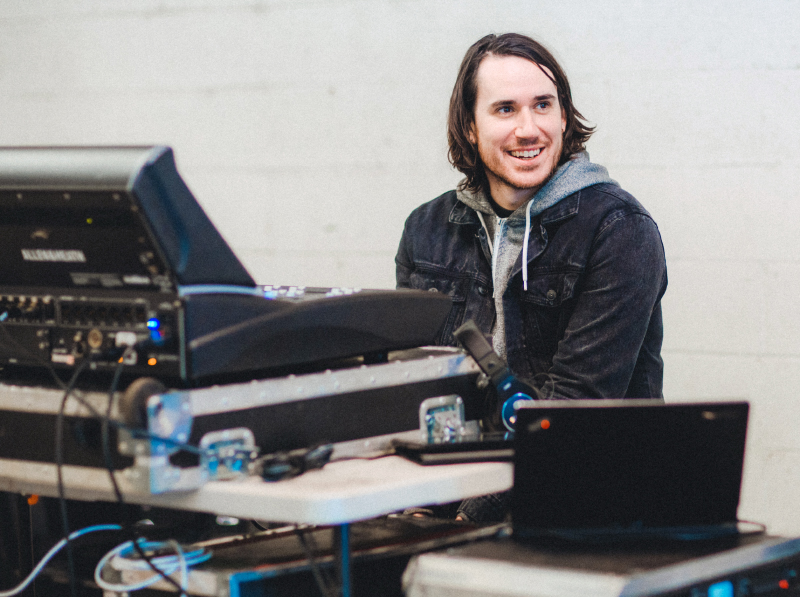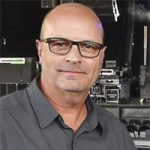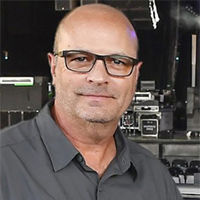I recently had the pleasure of conversing with Drew Thornton, front of house engineer for Billie Eilish, one of the brightest new talents in the world of popular music. Over the course of a very short time in working with the talented singer-songwriter, Drew went from carrying an Allen & Heath dLive compact console from show-to-show as checked luggage to mixing in the biggest arenas in the world.
It can all be a bit sudden and overwhelming, but years spent mixing hundreds of diverse bands in his role as head of audio at Rockwood Music Hall in New York City helped prepared him well for the challenges of keeping pace with an artist’s meteoric rise. A solid education from the Conservatory of Recording Arts and Sciences in Arizona laid the groundwork, and time spent freelancing for Harmony Sound in Los Angeles and mixing live for A Great Big World helped him prepare for the onslaught that was to come as Eilish’s star rose. Not only is Drew thoughtful and wise beyond his years, he’s a warm, funny and engaging colleague who I now call my friend.
Jim Yakabuski: I always like to start with this question when I first meet an audio colleague: When did you start working in audio and what inspired you to want to be a live mix engineer?
Drew Thornton: I started recording myself when my high school band left for college and I really got into it. I thought, “Man, this would be pretty cool if I didn’t have to play all the instruments at the same time.” That’s when an internet search on a 56k modem explained to me that there were these people called audio engineers. I thought, well that sounds perfect for me!
JY: Was there a particular artist, band or “famous” audio engineer who inspired you to pursue live audio vs studio engineering or another specialty segment in audio?
DT: Well, at that time it would have been Trent Reznor. Since I was trying to do it all myself around that time, I became fascinated with his ability for creating sounds and his writing. I’ve always felt like he too was also taken in by the engineering side of music based on his sounds.
JY: Did you develop as a live engineer from a musician’s approach or were you more interested in the tech side of things? If both, how would you say you combine both facets when mixing a band?
DT: A little of both. As I mentioned before, I started as an “artist” trying to record myself, then went into the studio side of things, which then pushed me into live music. As for my approach, I feel like what we do is a type of art in itself. I always want the band to sound as good as possible and as close to the record as we can get.
I think artists today appreciate that train of thought. They spend so much time getting their recordings to sound a certain way, so it feels like a really good reference of what they hear themselves sounding like. Of course, there are exceptions to the rule, but I think that goal of achieving a record-like sound is starting to become way more common.
JY: What are your top three reasons to use digital consoles for tours and one-offs?
DT: Workflow, speed, and sound, believe it or not. I feel like the throw-and-go one-off approach is all about speed. You can get so much done when you pre-program the desk in the way that not only makes you feel comfortable but has some starting points for processing. Being able to set up gates and comps ahead of time with the threshold open is really handy. I also usually set up my center bank pretty much the same way every time which is great for muscle memory.
As for the touring side of things, I would have to add consistency as an additional reason. That’s one of the biggest reasons I’ve tried to keep things in the digital realm. I would love to have a rack of awesome outboard gear, but who says you’ll always get the same gear with the same tubes at every place in the world”? I know it can be much more challenging to do it all in the box, but I feel up to the challenge.

JY: What’s your favorite piece of audio gear that you’ve used in your career? Are you still able to use that piece of gear? If analog, is there a good digital version of it as well?
DT: Oh man, it’s got to be the Allen & Heath dLive. At this point, I just feel really comfortable with it. I feel like it has all the tools I need for most shows I do. Having a console where you can get the sounds out of your head and into the speakers is important, and I think that desk has most of the features I feel is necessary for me.
JY: Plugins, no plugins, or just a few?
DT: Only a few plugins right now. I tend to swing from doing too little to doing too much, and I also don’t want to say never since I’m always thinking on how to make things better. Having more harmonic saturation plugin options definitely gets the wheels turning. I do feel like I want to avoid relying on external processing so maybe that’s why I’m trying to keep most of my work in the console.
JY: What do you sonically like (and dislike) about clubs, theaters and arenas?
DT: I love an acoustically tight club. It’s really fun to have that clean, punchy low to low-midrange, but then the challenge is adapting to 500 to 1,000 sweaty people piling in, raising the temperature, and covering all the reflective surfaces. I’ve always found it a little more challenging to predict because the change is usually so dramatic. It’s a fun challenge though.
Arenas are great, in that a full house of people physically occupies such a small volume of the overall indoor cubic space. Usually, the biggest change I find from sound check to show is the floor, and sometimes the throw of ground subs. The real challenge in arenas, I find, is adapting the built-in depth of the mix into a very reverberant space and, of course, achieving a consistent and punchy low end.















